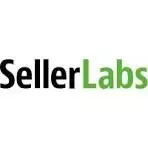Managing an Amazon business efficiently can be challenging without the right tools in place. With the ever-evolving e-commerce landscape, sellers need to stay competitive, and that’s where Amazon marketplace software comes into play. These tools provide online sellers with the ability to manage inventory, track sales, optimize product listings, and handle orders more effectively.
Amazon marketplace software acts as a central hub for your business operations, helping you save time, make data-driven decisions, and ultimately grow your sales. In this overview, we’ll explore the key benefits, tips for choosing the right software, best practices for using these tools, and common mistakes to avoid.
Benefits of Amazon Marketplace Software for Online Sellers
Amazon marketplace software offers various advantages that can significantly improve the efficiency and profitability of your business. Here are some of the primary benefits:
-
Centralized Management: Marketplace software consolidates multiple aspects of your business, from inventory management to customer orders, into a single platform. This streamlines processes and reduces manual efforts.
-
Time-Saving Automation: Many tools offer automation features for tasks like repricing, product listing optimization, and order fulfillment. By automating repetitive tasks, sellers can focus on other growth areas of their business.
-
Data-Driven Insights: Advanced marketplace software includes analytics and reporting features that provide insights into sales trends, inventory levels, and customer behavior. This helps sellers make informed decisions.
-
Inventory Management: Sellers can manage stock levels in real-time and receive alerts when inventory is low. This helps to prevent stockouts or overstocking, both of which can impact profitability.
-
Improved Customer Service: Some software solutions offer features to streamline communication with customers, manage feedback, and respond to queries more efficiently, ultimately boosting customer satisfaction.
-
Enhanced Sales Performance: By providing features like keyword research, listing optimization, and sales tracking, Amazon marketplace software helps sellers improve their visibility and sales rankings on Amazon.
How to Choose the Right Amazon Marketplace Software?
Selecting the right marketplace software for your Amazon business requires careful consideration. Here’s what you should keep in mind when evaluating your options:
-
Business Size and Complexity: Consider the size and scope of your business when choosing software. Larger businesses with multiple SKUs may need more advanced features like multi-channel management, whereas smaller sellers may benefit from simpler solutions.
-
Integration with Amazon Systems: Ensure that the software integrates seamlessly with Amazon Seller Central and other tools you’re already using. This reduces the risk of data syncing issues and improves overall functionality.
-
Automation Features: Look for software that offers automation capabilities, such as automated repricing, listing updates, and order fulfillment. This helps reduce the time spent on mundane tasks and boosts efficiency.
-
Analytics and Reporting: The right marketplace software should provide in-depth reporting on sales, performance metrics, and customer insights. Access to real-time data enables better decision-making and strategic planning.
-
User Interface and Usability: A user-friendly interface is key to ensuring that you can navigate the software easily. Complicated or cluttered software can result in wasted time and reduced productivity.
-
Customer Support: Make sure the software provider offers reliable customer support, including tutorials, FAQs, and live assistance to resolve issues quickly when needed.
Sellbrite is designed for online sellers who want to manage their sales on multiple platforms from one centralized tool. Whether you're selling on Amazon, eBay, Shopify, or Walmart.
Bindwise is an all-in-one solution for Amazon sellers who want to keep their business safe from listing hijackers, monitor performance, and gain valuable insights.
BuyBotPro is an automated Amazon FBA calculator and sourcing tool designed to make product research easier and more efficient. It evaluates potential products by calculating profitability, sales velocity, competition, and even factors like Amazon restrictions.
Sellbery is a product information management software that aims to assist online sellers who want to expand their operations across many e-commerce platforms effortlessly.
Egrow.io is an all-in-one software solution tailored specifically for Amazon sellers. It is designed to help sellers perform essential tasks such as product research, market analysis, keyword tracking, and competition monitoring. Whether you’re a new seller or an established Amazon FBA (Fulfilled by Amazon) seller, Egrow.io simplifies complex tasks, saving you time and providing critical data to improve your business strategy. What sets Egrow.io apart from its competitors is its user-friendly interface and a wealth of data that is updated in real-time. The platform is ideal for those looking to identify profitable products, track their performance, optimize their listings, and maximize sales on Amazon.
Inventory Source is a premier inventory management and dropshipping platform designed to simplify the e-commerce experience for online sellers. With features such as automated inventory syncing, supplier integration, and product data management, it empowers sellers to efficiently manage their inventory and streamline their dropshipping operations. This review delves into its capabilities, services, and overall effectiveness in enhancing business productivity.
Wholesale2B is a dropshipping solution that caters to e-commerce sellers by offering access to a vast range of products and simplified integration with major selling platforms.
MerchantWords is an Amazon keyword research tool that helps sellers identify popular search terms and relevant keywords for their products.
Zon.Tools offers Amazon sellers a comprehensive PPC management solution that uses intelligent automation to enhance advertising strategies.
Seller Labs offers a suite of tools designed to help Amazon sellers grow their businesses through advertising automation, keyword research, review management, and customer feedback optimization. By leveraging data-driven insights, Seller Labs equips sellers to navigate the Amazon marketplace efficiently and profitably. This review breaks down the platform’s key features, including its Amazon PPC tools, product research solutions, and listing optimization features.
Best Practices for Using Amazon Marketplace Software
To get the most out of Amazon marketplace software, follow these best practices:
-
Automate Repetitive Tasks: Utilize the software’s automation features to handle tasks like inventory updates, pricing adjustments, and order processing. This allows you to spend more time on strategic growth initiatives.
-
Optimize Product Listings: Use built-in optimization tools to improve your product titles, descriptions, and keywords. Optimized listings increase visibility and help drive more sales.
-
Leverage Data for Decision-Making: Regularly review the analytics and reports provided by your software. Identify trends in sales performance, customer behavior, and product demand to adjust your strategies accordingly.
-
Monitor Inventory in Real-Time: Use the software’s inventory management features to track stock levels and avoid stockouts. Set up automatic alerts for when items are running low.
-
Stay on Top of Customer Feedback: Use the software to manage customer feedback, reviews, and inquiries. Addressing customer issues quickly leads to better ratings and improved seller performance on Amazon.
Common Mistakes to Avoid When Using Amazon Marketplace Software
While using Amazon marketplace software can simplify your operations, it’s essential to avoid these common mistakes that could limit its effectiveness:
-
Ignoring Analytics: Failing to utilize the data and insights offered by the software is a missed opportunity. Regularly analyze reports to improve performance and fine-tune your strategy.
-
Relying Too Much on Automation: While automation is a valuable feature, don’t rely on it exclusively. Maintain a human element in certain tasks, such as customer interactions or nuanced pricing strategies.
-
Not Optimizing Listings Regularly: Product listings need to be continually optimized to remain competitive. Neglecting listing optimization can result in reduced visibility and sales.
-
Underestimating Inventory Management: Not keeping a close eye on inventory levels can lead to stockouts or excessive stockpiling. Both situations can negatively impact profitability and customer satisfaction.
-
Choosing the Wrong Software for Your Business Size: Avoid selecting overly complex software if you are a small seller, as this can lead to unnecessary expenses and steep learning curves. Conversely, ensure the software has advanced features if you operate a large-scale business.
Final Thoughts
Investing in the best Amazon marketplace software for your online business can make a significant difference in how efficiently you manage your operations. From inventory management to listing optimization, these tools help sellers save time and scale their business more effectively.
When choosing the right software, it’s essential to consider your business size, specific needs, and the level of automation required. Following best practices and avoiding common mistakes will ensure that you get the most out of your chosen marketplace software and maximize your success on Amazon.

.webp)



.webp)

.webp)

